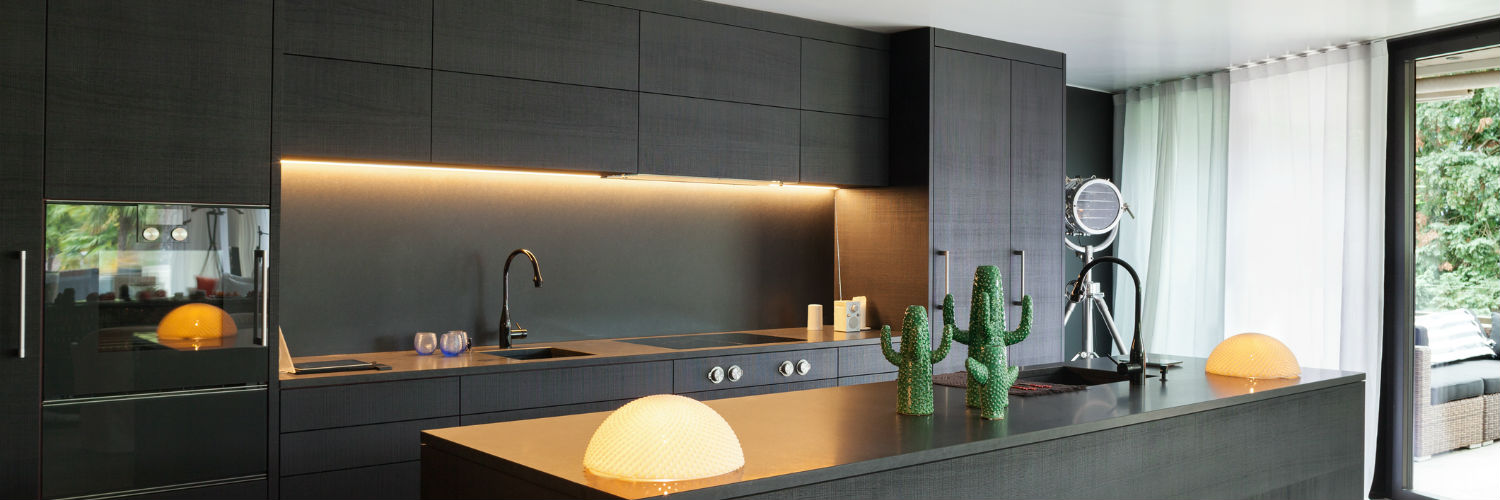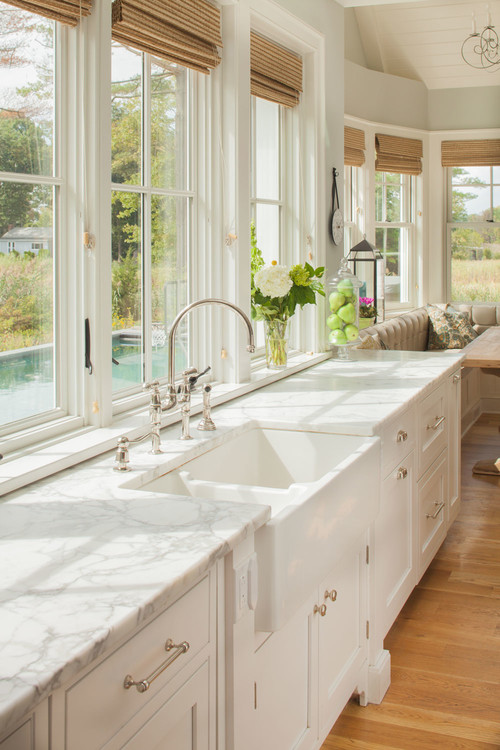How to Tell the Difference Between a Buyer’s Market and a Seller’s Market


This is SO IMPORTANT for you to know as a Buyer or Seller so that you can strategize your plan of action wisely and accurately. Of course, your agent can easily explain this to you, but you need to understand it! Make no mistake, if you don’t pay attention to the difference in these two markets, you may not enjoy the results of the transaction.
What you need to know when buying or selling a home.
One important thing to remember about the property market is that it’s always in a state of change. Sometimes the market is favorable to buyers and sometimes it’s favorable to sellers. But don’t worry, a knowledgeable agent can guide you in the sale or purchase of your next home, no matter what type of market you’re facing.
What is a Seller’s Market?
A seller’s market is simply a property market that benefits you as a seller. In a seller’s market, there’s a scarcity of properties, which can drive up the price of homes, especially in desirable locations.
Sellers can depend on real estate experts to know what the market is doing, but here are some signs of a seller’s market:
– Low inventory when compared to previous months and/or years
– Homes are selling faster
– Less than six months of inventory on the market
– More homes are selling
– Median sales prices are growing
– Less information in real estate ads; just the bare details
– “For Sale” signs don’t stay up long before being replaced with “pending” or “sold”
What is a Buyer’s Market?
A buyer’s market is the opposite of the seller’s market. If you’re buying at this time you’ll be spoiled for choice as the supply of homes on the market exceeds the number of buyers, giving you the chance to score a fantastic deal.
A sharp agent will quickly be able to tell you where the market lies, but here are some signs of a buyer’s market:
– Inventory that is high when compared to previous months and/or years
– Homes are selling more slowly
– More than six months in inventory on the market
– Sales prices are shrinking
– Fewer sales are taking place
– Real estate ads are growing in size, giving more details and/or images
– “For Sale” signs are staying longer, meaning the days on the market are longer too
How Do I Figure out the Months of Inventory in a Market?
1. Look for the total number of active listings for the month prior to the current one
2. Look for the total number of sold or closed transactions for the same time frame
3. Divide the total number of listings by the number of sales. This figure represents the number of months of inventory there are.
For example, let’s say there were 6,500 listings in one month’s time. During that same time, there were 1,500 properties that were sold. Divide 1,500 into 6,500 and you arrive at 4.3 months of inventory, meaning that this is a seller’s market.
While a savvy real estate agent is the best resource for this information, other resources include real estate listing websites and/or your local real estate association.
Do All Markets Follow the Same Cycles?
Markets are always in a state of flux. At its core, people are the driving force behind the real estate market.
For example, as more people move into a location, the more need there is for housing. If the number of properties in the area cannot support the number of people moving in, prices of existing homes will likely rise until more homes can be built.
This constant change to the supply and demand in a market is how markets shift back and forth from being more favorable for either buyers or sellers.
Can I Buy in a Seller’s Market?
Absolutely, but it’s not going to be a walk in the park. You’ll need determination, knowledge, and most importantly, someone on your side who knows the market inside and out.
Something to consider – you don’t know the seller’s true reasons for wanting to sell. Maybe there’s a divorce pending or another baby on the way and they need more space fast. Whatever is going on with the seller, a savvy agent will spot opportunities to help you and the seller arrive at a mutually agreeable solution.
One key reason it’s vital to engage an agent in a seller’s market is for their negotiating skills. While it’s important to always negotiate, a seller’s market calls for serious help to ensure that you don’t pay more than you need to.
Should I Wait to Sell?
It depends. Is it mandatory that you sell right now or could you wait until it’s a seller’s market again?
Consult with an agent to get his opinion about your chances of getting what you need or want for the sale of your home. He just might have some options you may not have considered that will help you get out from under your home and get on with your life.
Don’t be afraid to sell or buy if you think the market isn’t in your favor. The real estate market can be highly varied, so trust your agent to help you get the best possible results, no matter what the market looks like.
Source: CB Blue Matter
What Are Closing Costs?


First time home buyers…this ones for YOU! Must read!
What are closing costs? What should I know before getting my next loan?
What Are Closing Costs?
Closing costs are fees paid in connection with the refinance or transfer of ownership in real property. They are paid by either the buyer or the seller on the settlement date.
These fees will always vary. What you pay for one refinance or property transfer will not be the same as another. This is due to the different parties involved, different types and locations of property, the financial capacity of a buyer and many more factors.
The law requires lenders to give you a loan estimate within three days of receiving your application. This document sets out what your closing costs will be. These fees, however, are not set in stone and subject to change.
Your lender should provide a closing disclosure statement at least three business days before the closing date. This is a more reliable estimate of your closing costs. Compare it to the loan estimate you’ve received and ask your lender to explain the fees and the reasons for any changes.
What Is Included in Closing Costs?
Your costs will differ depending upon the transaction. Types of costs include:
- Credit report fees (the cost of checking your credit record)
- Loan origination fees (which consists of the cost to your lender for processing your loan)
- Attorney fees
- Inspection fees (for inspections requested by either you or the lender)
- Appraisal fee
- Survey fee (so that both you and the lender know where your property boundaries lie)
- Escrow deposit which may cover private mortgage insurance and some property taxes
- Pest inspection fee
- Recording fee paid to a county or city authority to file a record of the property transfer and/or new mortgage lien against the property
- Underwriting fee to cover the cost of processing a loan application
- Discount points (money you pay your lender to get a lower interest rate)
- Title insurance (protection for you and the lender should there be any issues with title to the property)
- Title search fees (costs incurred by the company who checks the title on the property)
These fees can range anywhere from 2% to 5% of a property’s selling price. It’s smart to get estimates from two or three lenders so that you can take these costs into consideration before making an offer. For the easiest way to compare lenders who may use different terminology to describe their fees, simply ask for a loan estimate from each.
Can I Negotiate These Costs?
Some fees, such as document, processing, service, underwriting and courier charges are open to negotiation. However, third party fees such as an appraisal or survey, are not.
If you’re worried about how much you’ll need at closing you can find a bank that doesn’t escrow real estate and homeowners insurance. Often, banks will escrow six months of real estate taxes and several months of homeowners insurance premiums. When added to the other closing costs, this can be quite a large sum.
Keep in mind, however, that you will be responsible for paying your homeowners insurance and property taxes when they’re due rather than relying on your lender to pay them for you.
Where allowed by law, you can negotiate with the seller to have them pay some closing costs normally attributed to the buyer.
Can I Add my Closing Costs to the Loan?
Most loan programs will allow for a percentage of the purchase price to go towards closing costs. The easiest way to do this is to ask for a seller credit towards the closing costs.
The seller credit means that the seller will receive a smaller ‘net’ amount at closing, however there is a way to make a seller credit more palatable to the seller. If you can qualify for a higher purchase price – say 2.5% over list – the seller won’t lose any money and you can use the seller credit towards the closing costs.
In this scenario, what you’re doing is financing your closing costs over the life of the loan.
You can also do a lender credit. Like a no-cost refinance, you agree to a higher interest rate so that the lender will pay some of the closing costs. You can potentially get a lender credit of $2,000 to $4,000 – a sizeable amount of fees.
Keep in mind, however, that should you continue paying the same mortgage over the life of the loan, you could end paying more than if you were to pay up front.

What Can I Expect?
Before closing day arrives, contact your agent to confirm that he or she has everything for the transaction to go as smoothly as possible. Pull together any paperwork that you have received and keep it on hand for easy reference on closing day.
Be prepared to take your time reading through all of the closing documents. Make sure you completely understand all of the terms you’re agreeing to. If some of the terms are missing or incomplete, don’t sign until they are resolved to your satisfaction.
Your lender will send money to the closing agent via a wire transfer and may require that you set up a new escrow account with them to pay your property taxes and homeowners insurance together with your monthly mortgage payment.
You should be advised before closing day how much money you’ll need to have for closing, so bring your checkbook with you to cover any necessary escrow and/or closing costs.
Among the many documents you’ll be signing, three of the most important documents will be the:
- Hud-1 Settlement Statement – a document which sets out the costs incurred with your closing.
- Deed of Trust or Mortgage – a document in which you agree to a lien being placed against your property as security for repayment of your loan.
- Promissory Note – a document which can be described as a legal “IOU” which sets out your promise to pay according to the terms of the agreement.
Source: CB Blue Matter

 Facebook
Facebook
 Twitter
Twitter
 Pinterest
Pinterest
 Copy Link
Copy Link

























